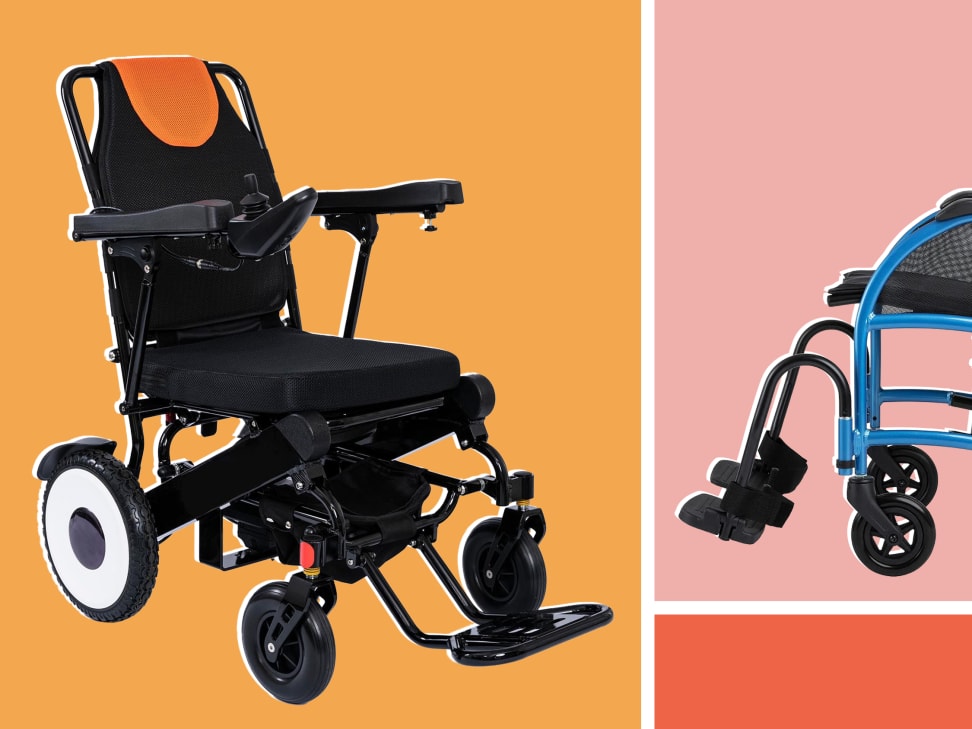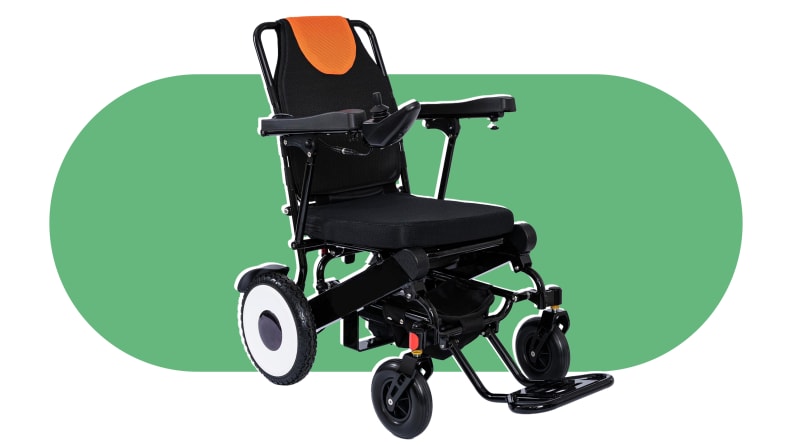Are you considering getting a transport wheelchair for yourself or your loved one? Transport wheelchairs are a great option for mobility, but there are both pros and cons to consider.
In this complete guide we’ll help you decide if a transport wheelchair is the right fit for you by exploring the benefits and drawbacks. You won’t want to miss it!

Transport or “companion” wheelchairs are lightweight, specially designed chairs that can be used for short-term assistance for a user. Transport wheelchairs provide the necessary mobility to navigate around everyday scenarios in public spaces such as hospitals, airports and shopping malls. They are also ideal for trips to the zoo, parks and other public areas.
The strong and durable construction of transport wheelchairs makes them an indispensable mobility device that ensures safe and reliable navigation around any terrain. They offer unmatched convenience as they are easy to fold up, maneuver and store. Additionally, transport wheelchairs are lightweight in comparison to traditional manual wheelchair models with a frame of light aluminum or steel materials making them extremely easy to transport and store in trunks or vans.
This guide will provide an overview of the pros and cons of transport wheelchairs so users can make the best decision when it comes to purchasing one.
Definition of Transport Wheelchair
A transport wheelchair is a lightweight chair with small wheels, often called “transport chairs” or “companion chairs”, designed for people who are unable to walk due to temporary or permanent disabilities or illness. They usually have shorter seat backs, small rear and front wheels, and armrests that can be removed for ease of use. Transport Wheelchairs are designed to enable those who can not propel themselves to be active and independent.
For one looking for an option that is cost effective, transport wheelchairs can be an excellent choice as they tend to cost significantly less than regular power wheelchairs. Transport Wheelchairs are a great option for use in airports as well as other accessible places.
These chairs come in various sizes and models offering multiple features at various prices suited to meet any unique needs. It’s important that when selecting a transport wheelchair that you are familiar with the available options and consider all factors such as weight capacity, size compatibility, seating comfortability etc., before committing.
Pros of Transport Wheelchairs
Transport wheelchairs are an ideal type of mobility equipment for those who need to travel in order to move from one place to another. There are a number of advantages associated with using transport wheelchairs that make them beneficial for people with limited mobility. The following list outlines some of the major benefits associated with transport wheelchairs:
- Improved Safety: Transport wheelchairs typically have hand brakes, footrests and secure seatbelts, which provide users with added safety when traveling. This can help to ensure that users do not experience an unexpected fall or other mishap while on the go.
- Easy Transportation: Transport wheelchairs tend to be lightweight and compact, making them easy to store in car trunks or other tight spaces. Their light weight also makes it easier for people to quickly get their wheelchair in and out of vehicles when necessary.
- Increased Mobility: By providing a convenient way for individuals with limited mobility to travel from one place to another, transport wheelchairs can help open up a host of opportunities that would otherwise remain inaccessible. This improved level of autonomy can greatly benefit those who require assistance for everyday tasks or activities outside the home.
- Cost-Effective Option: One important factor behind purchasing a transport wheelchair is cost, as many models are much more affordable than other types of available mobility equipment. Being able to purchase a cost-effective yet reliable piece of equipment can be immensely helpful when dealing with limited resources or budgets.
Lightweight and Compact Design
Lightweight and compact transport wheelchairs come with a host of benefits that make them highly sought after. Many of these designs have a smaller seat width and depth, which can be beneficial for those who require help to move from one place to another as they minimize physical effort. Additionally, they tend to lessen strain on the arms, legs and back while still allowing maneuverability. Most also feature a foldable design that makes them relatively easy to transport when not in use.
On the other hand, this type of wheelchair may not be suitable for individuals who require more stability or those who are bigger in size. In addition, space could be an issue with this type of chair due to its small size and lack of comfort features such as adjustable armrests or headrest cushions. Furthermore, they are typically priced higher than their heavier counterparts; thus budget should also be taken into account when deciding on the best transport wheelchair for your needs.
Easy Maneuverability
It is important to consider how maneuverable a wheelchair is when selecting one. Transport wheelchairs are easier to maneuver than standard wheelchairs, due to the fact that they are lightweight and collapsible. This makes them easy to turn and move around tight spaces and corners with ease.

The four small wheels provide great stability on uneven surfaces, making transport wheelchairs suitable for indoor and outdoor use. Additionally, with their light weight, transport wheelchairs are often easier for caregivers or family members to lift in and out of vehicles or up stairs.
III. Cons of Transport Wheelchairs
Despite being lightweight and comfortable, transport wheelchairs are not without their drawbacks. For those considering using a transport wheelchair, here are some of the drawbacks to consider before purchasing:
-Limited range: Transport wheelchairs typically have a more limited range than full-size manual wheelchairs. Depending on the battery capacity, you may be limited in how far you can travel.
-Low weight limit: Most transport wheelchairs have a maximum weight capacity of 200 pounds, which means they may not be suitable for larger individuals.
-No access to terrain: Transport wheelchairs may provide good maneuverability on flat surfaces but they cannot handle obstacles like rocks or stairs easily. It’s important to plan your route to avoid them if possible.
-Battery life: The battery life varies depending on the model and how intensely it is used. Charging can take several hours depending on the battery type and its settings so you will need to plan accordingly when making longer trips.
Limited Comfort and Customization
Detachable transport wheelchairs are the most lightweight and portable chairs available and are designed for patients who require assistance from caregivers to move from place to place. While these chairs may have a lower price tag than some heavier models, they don’t offer the same level of comfort or customization. The lack of cushioning, seat depth, back height adjustments, and adjustable armrests often limit the ease and comfort of transport chairs.
Additionally, many attachable models come with smaller wheels that make maneuvering around tight spaces more difficult. For those who need more support on their way to appointments or errands, a more supportive option with customized features would be preferable.
Reduced Mobility for Independent Users
For those users who are more independent, lightweight transport wheelchairs offer the promise of increased mobility without sacrificing independence. A standard transport wheelchair can weigh as little as 15 pounds which is significantly lighter than a standard wheelchair and can really make a difference when it comes to managing tight corners and maneuvering around obstacles. With their lightweight design, transport chairs also make travel much easier, allowing users to quickly fold the chair and store it in the trunk of a car or even an airplane overhead compartment if necessary.
However, while they are highly adaptable for use on almost any terrain or in almost any type of environment, the drawback is that independent users are restricted in their ability to propel themselves. This lack of mobility means that independent users will still need some form of assistance when getting around such as someone pushing them or using an electric motorized version with a joystick control. Additionally, while they may be safe and comfortable to sit in while being pushed, transport wheelchairs don’t typically provide much support for canted seating positions essential for postural support so again this could necessitate additional help from caregivers.
Not Suitable for Long-term Use
Transport wheelchairs are designed with convenience and portability in mind, and as such, they are built with lightweight materials that do not provide the long-term durability or comfort of full-size wheelchairs. As the name suggests, transport wheelchairs are best suited for short-term outings rather than everyday use. In addition, their lighter frame also makes them more prone to wear and tear, making them less suitable for intensive everyday use.
Before investing in a transport wheelchair, it is important to consider how frequently you will be using it— if you anticipate frequent usage of your transport chair that involves heavier passengers or prolonged distances, you may want to consider investing in a more durable model made from heavier materials. Additionally, look for features such as adjustable back height and adjustable seat width that can provide added comfort and support during the journey.
Conclusion
In conclusion, transport wheelchairs are a great way to increase someone’s mobility, allowing them to travel further and more frequently. Their lightweight design, durable frame and other special features make them ideal for getting around easily. However, there are some drawbacks associated with these models including their lower weight capacity, lack of maneuverability in tighter spaces, and limited portability.
Ultimately it is up to the user to decide which type of wheelchair best suits their needs. To ensure that you make an informed decision before buying a mobility aid, be sure to take into account all of the pros and cons mentioned above.
FAQs
What are the benefits of transfer wheelchair?
Transfer wheelchairs are lightweight and easy to maneuver, making them ideal for short trips or transfers between locations.
Are transport wheelchairs comfortable?
Transport wheelchairs are designed for short-term use, so they may not have the same level of comfort as regular wheelchairs. However, some models have features such as padded seats and armrests.
How is a transport wheelchair different from a regular wheelchair?
Transport wheelchairs are designed for short-term use and are lightweight and compact for easy transportation. They do not have large wheels for self-propulsion, and are typically pushed by a caregiver.
Are transport wheelchairs hard to push?
Transport wheelchairs are generally easier to push than regular wheelchairs due to their lightweight and compact design.
Who needs a transport wheelchair?
Individuals who need assistance with short-term mobility or transfers between locations may benefit from a transport wheelchair, such as those recovering from surgery or those with temporary injuries.
What are the disadvantages of using a wheelchair?
Disadvantages of using a wheelchair can include limited mobility in certain environments, social stigma, and physical discomfort.
What is the best way to transport a wheelchair?
The best way to transport a wheelchair will depend on the individual’s specific needs and the type of wheelchair. Some options include using a car rack or lift, folding the wheelchair and placing it in the trunk, or using a wheelchair-accessible vehicle.
What are the four types of wheelchair transfers?
The four types of wheelchair transfers are dependent, assisted, stand-pivot, and independent transfers.
What are some safety features when transferring patients in a wheelchair?
Safety features when transferring patients in a wheelchair can include ensuring proper body mechanics, securing the wheelchair brakes, and using assistive devices such as transfer belts or sliding boards.
What should I look for in a transport wheelchair?
Features to consider when choosing a transport wheelchair include weight, size, comfort, durability, and ease of use. It is important to choose a model that fits the user’s specific needs and preferences.
See Also-
- Best manual wheelchair 2023
- Best electric wheelchair for heavy person 2023
- Best wheelchair 2023
- Best wheelchair for travel 2023
- Best wheelchair gloves 2023



